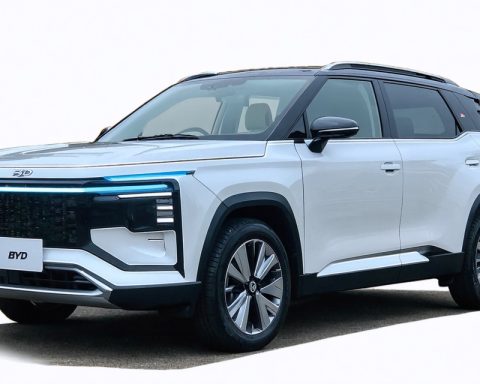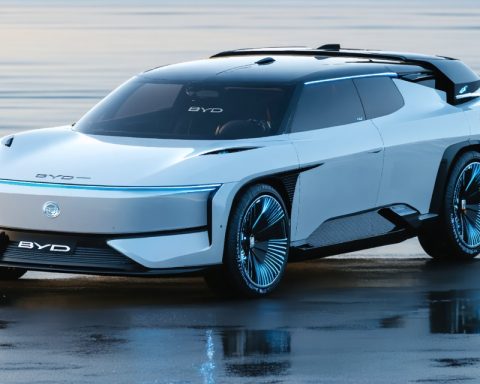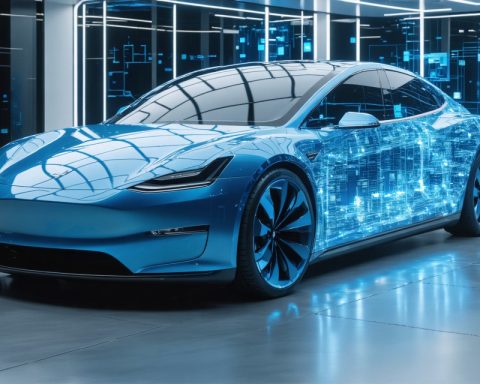- Nikola’s Chapter 11 bankruptcy highlights challenges in the hydrogen trucking sector, revealing the vulnerabilities of fuel cell electric vehicles (FCEVs).
- Chapter 11 functions as a strategic opportunity, allowing companies like Nikola to reimagine strategies and manage debts while continuing operations.
- The hydrogen trucking industry faces significant hurdles, including costs, infrastructure limitations, and competition from traditional electric and diesel engines.
- Despite the allure of clean energy, economic viability remains a critical challenge for advancing hydrogen truck technology.
- This sector’s evolution is ongoing, with a focus on balancing innovation with practical deliverables.
- Nikola’s situation serves as a reminder that the journey toward sustainable transportation requires perseverance and adaptability.
Once a beacon of innovation, the hydrogen trucking sector now finds itself at a crossroads. The recent plunge of Nikola into Chapter 11 unveils the frailties that loom behind the shimmer of fuel cell electric vehicle (FCEV) technology.
While bankruptcy may carry a sinister note, it also speaks to the resilience built into the American financial system. Chapter 11, often perceived as a company’s last gasp, actually offers a lifeline—a chance for reinvention. Companies like Nikola, despite public setbacks, can continue operations, albeit without the sheen of their former stock market glory. For Nikola, the road ahead is about reimagining their strategy while negotiating debts that, for now, are conveniently paused.
Yet, Nikola’s predicament illuminates broader truths about the FCEV trucking sector. Beyond the allure of cleaner energy, lie the rugged realities of cost, infrastructure, and competitive markets. Hydrogen trucks, straddling the line between tradition and disruption, face an uphill battle against established electric and diesel engines. While visions of a sustainable future linger, the path involves untangling a complex web of innovation and logistics.
Herein lies a stark reminder: innovation, ambitious as it may be, must wrestle with economic viability. The hydrogen trucking saga isn’t a tale of failure, but of evolution. As Nikola braces for the future, they, like the industry at large, must balance dreams with deliverables. This moment marks not an endpoint, but merely an interlude in a larger quest—a relentless drive toward bringing cleaner transportation to life.
Hydrogen Trucks at the Crossroads: What You Need to Know Next
How-To Steps & Life Hacks: Embracing Hydrogen Trucks
Hydrogen trucks offer a sustainable alternative to traditional diesel trucks, and here are steps and hacks for businesses looking to adopt this technology:
1. Evaluate Operational Needs: Assess your routes and fuel requirements. Hydrogen trucks excel in long-haul operations, where electric trucks might struggle due to battery range.
2. Infrastructure Planning: Investigate local availability of hydrogen refueling stations. Partner with infrastructure providers to explore installation near your distribution centers.
3. Performance Analysis: Conduct trials comparing hydrogen trucks with current fleet vehicles. Analyze their efficiency, refueling time, and load capacity.
4. Financial Assessment: Explore funding options and subsidies for adopting green technology. Governments often provide incentives for cleaner energy use.
5. Environmental Impact: Evaluate the carbon footprint reduction potential with hydrogen usage, emphasizing sustainability goals in your corporate communications.
Real-World Use Cases
Companies like Anheuser-Busch and Amazon are pioneering hydrogen fuel cell trucks, utilizing them for reducing emissions and demonstrating their viability in large-scale logistics.
Market Forecasts & Industry Trends
The global hydrogen fuel cell vehicle market is expected to grow significantly. According to MarketsandMarkets, it could reach a value of $42.03 billion by 2030. The growth is driven by advancements in fuel cell technology and increased investment in hydrogen infrastructure.
Reviews & Comparisons
Hydrogen fuel cell trucks are often compared against battery electric and diesel vehicles. While electric trucks are ideal for short urban routes, hydrogen trucks shine in long-distance transportation—offering quicker refueling times and longer ranges.
Controversies & Limitations
The hydrogen industry faces hurdles such as the high cost of production and the need for a widespread refueling network. Critics also point out energy inefficiencies in the hydrogen production process, arguing the electricity used could directly power electric vehicles instead.
Features, Specs & Pricing
– Range: Usually exceeds 300 miles per refueling.
– Refueling Time: Approximately 15 minutes.
– Payload Capacity: Comparable to traditional diesel trucks.
– Cost: Higher upfront costs compared to diesel but decreasing with technological advancements and scale.
Security & Sustainability
Hydrogen is non-toxic and can be produced from various renewable resources, promising low emissions. However, handling hydrogen requires strict safety standards given its flammability.
Insights & Predictions
The hydrogen trucking sector is poised for breakthroughs in fuel production efficiency and infrastructure development. Increasing collaborations between automakers and energy companies will likely accelerate this transition.
Tutorials & Compatibility
Integrating hydrogen trucks requires collaboration between logistics teams and technology providers to ensure compatibility with existing systems and processes. Training programs can aid in smooth transitions.
Pros & Cons Overview
Pros:
– Long-range capabilities
– Fast refueling
– Sustainable fuel source
Cons:
– Limited refueling infrastructure
– High production cost
– Energy inefficiency in production
Actionable Recommendations
– Monitor Industry Trends: Stay informed about advancements and government policies supportive of hydrogen technology.
– Infrastructure Partnerships: Collaborate with hydrogen suppliers to install necessary refueling infrastructure.
– Trial Runs: Start with a small number of hydrogen trucks to test feasibility and integrate them at a manageable scale.
For more information, check out resources from organizations like the U.S. Department of Energy’s Hydrogen and Fuel Cells Office, which provides insights into technology developments and policies.














